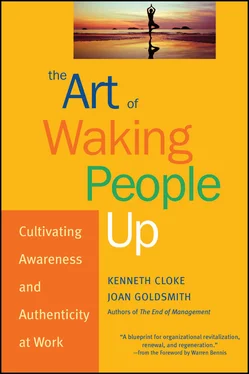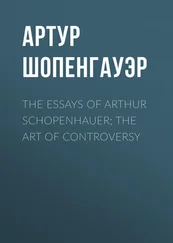• Negotiating clear boundaries and respecting those created by others, whether or not they respect yours
• Speaking honestly and intimately about yourself and your mistakes
• Being as sincere and unlimited with apologies as you are with honest feedback
• Being consistent over time
• Being open about problems and flexible about solutions
• Empowering others to make decisions or making them collaboratively
• Jointly agreeing on a vision or shared values or goals for your relationship
• Making your actions congruous with your vision, values, and words
• Encouraging teamwork, collaboration, and participation
• Listening and empathizing with others even if they have not listened or empathized with you
• Being dependable in crises or hard times
• Participating in social interactions and sharing personal information about your life
• Offering to sacrifice something important to you to achieve a larger goal
• Treating everyone with unconditional respect
Trust is a choice in every relationship. None of these actions will guarantee the restoration of broken trust, but they will make it more difficult to maintain distrust and gradually diminish trust-breaking behavior. Residue from past experiences, fears about the future, and incongruent behaviors in the present fuel feelings of distrust and block successful feedback, coaching, mentoring, and assessments, spinning employees into a downward spiral of anger and pain. Trust is rebuilt by focusing not on what the other person did or did not do but on critiquing one’s own behavior, improving one’s trust worthi ness, and focusing attention not on words and promises but on actions, attitudes, and ways of being.
We all live and work in a world we cannot fully trust, and must choose between three fundamental options regarding how to live in such a world and handle our distrust. We can approach whatever happens that does not match our expectations with a negative attitude and treat it as a burden, or we can approach it with a positive attitude and affirm its beneficial features, or we can transcend these categories, reject both, and end the ceaseless, complicated interplay between them.
The transcendent approach integrates the negative truth of harsh reality with the positive truth of generous possibility. It acknowledges the presence of necessity and opportunity, frustration and dedication, inadequacy and abundance, disaster and opportunity that are present in all change efforts, while not becoming limited to either of them. It does not accept the world as it is but works to transform it. These three ways of being are contrasted in Table 2.1.
Table 2.1. Three Ways of Being.
| Negative |
Positive |
Transcendent |
| Passive |
Active |
Engaged |
| Irresponsible |
Responsible |
Committed |
| Reactive |
Proactive |
Strategic |
| Uninterested |
Involved |
Intrigued |
| Asleep |
Relaxed |
Serene |
| Unaware |
Aware |
Alert |
| Impatient |
Patient |
Resolute |
| Self-centered |
Other-centered |
Interconnected |
| Dishonest |
Honest |
Have integrity |
| Resistant |
Accepting |
Enthusiastic |
| Stuck |
Flexible |
Agile |
| Alienated |
Popular |
Courageous |
| Confused |
Clear |
Confident |
When we are negative or unhappy about life or its circumstances, it is easy to become apathetic or cynical and simply give up. When we are positive or happy, we easily become complacent and develop a stake in preserving the status quo. This causes us to fix problems superficially and become stuck or dulled to the creative, transcendent possibilities that come from fully exploring the sources of negativity. When we recognize the higher combined truth that lies hidden in both these alternatives, we start to recognize the presence of deeper problems, shift them at their source, and transcend the attitudes and ideas that got us into trouble in the first place. We can then move on to discover newer, higher orders of problems.
Taking a negative approach to problems is the first step in recognizing their presence, but it is one that easily leads to cynicism and apathy, which disarm change efforts and thereby perpetuate the problem. Taking a positive approach leads us to come up with alternatives, but it also easily results in denial that the problem is as important or destructive as it is, which leads us to fix it superficially. Taking a transcendent approach means seeing the problem in all its manifestations but not being discouraged by the seriousness or difficulty of the task ahead. This leads to an enhanced commitment to transcend the problem both internally within ourselves and externally within the organization or even in society as a whole.
We become far more powerful and effective in solving problems when we have already solved them within ourselves and are able to approach them from above; when we adopt an outlook that transcends negative and positive characterizations; when we create a context that is oriented toward the future and avoids getting stuck in the past.
At the same time, if we focus only on ourselves and ignore the external conditions that continually generate new problems, we will not succeed in overcoming them. We will merely escape the immediate need to face them and allow them to reappear in different guises. When we transform the systems that produced these problems and transcend our inner vulnerability to them, we more easily understand how we got into difficulty in the first place, how to collaborate in ending them, and how to avoid similar problems in the future.
The object of waking people up and using turnaround processes and techniques is ultimately to understand that our most difficult problems are already solved, transformed, and transcended when we approach them with awareness, authenticity, congruence, and commitment. This knowledge brings with it the realization that there is nothing that cannot be improved or made better through a combination of individual and collective awareness leading to committed action; that all of life is a process of waking up and turning around; and that everything that happens presents us with opportunities for transcendence.
Конец ознакомительного фрагмента.
Текст предоставлен ООО «ЛитРес».
Прочитайте эту книгу целиком, купив полную легальную версию на ЛитРес.
Безопасно оплатить книгу можно банковской картой Visa, MasterCard, Maestro, со счета мобильного телефона, с платежного терминала, в салоне МТС или Связной, через PayPal, WebMoney, Яндекс.Деньги, QIWI Кошелек, бонусными картами или другим удобным Вам способом.











